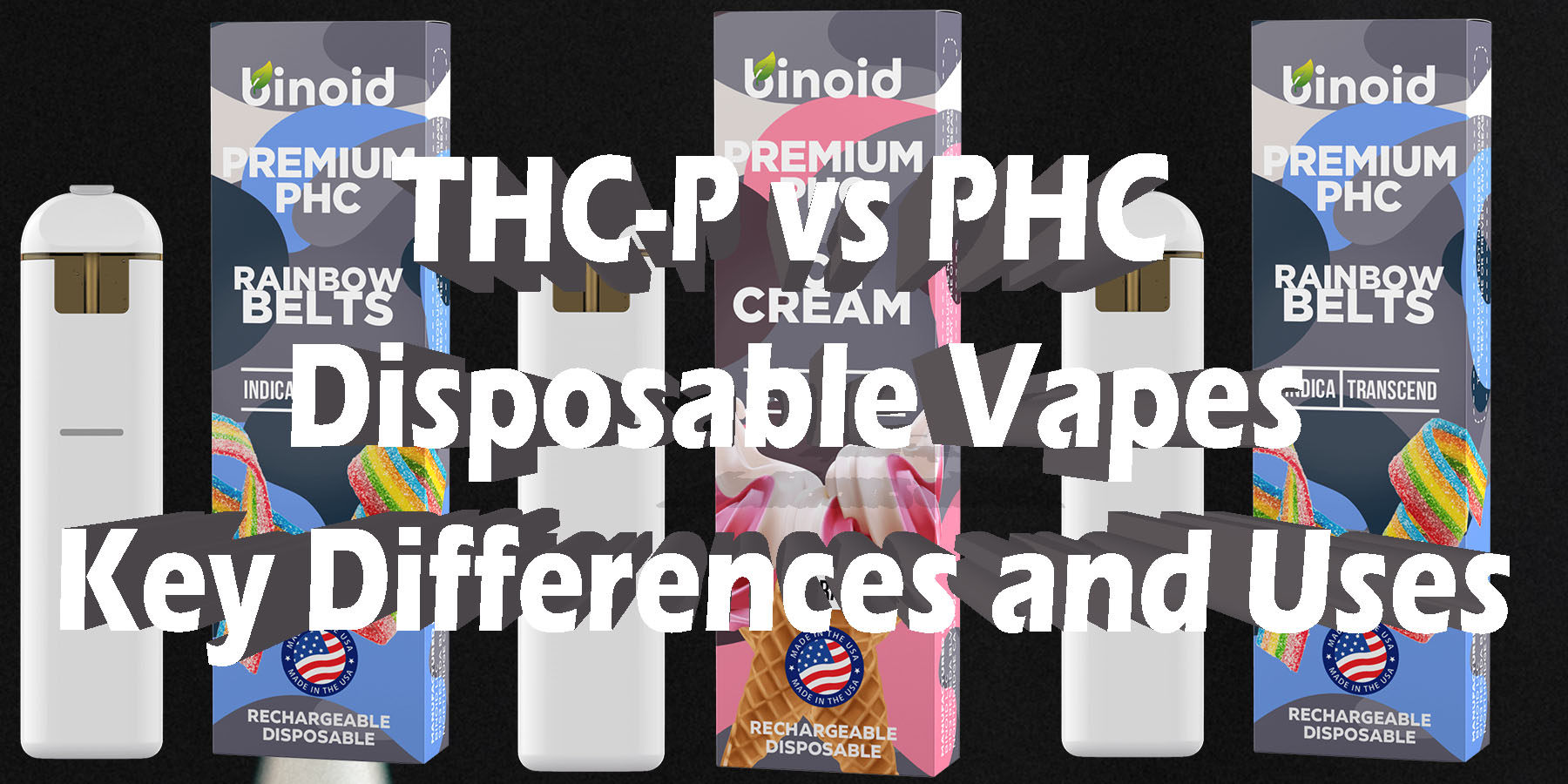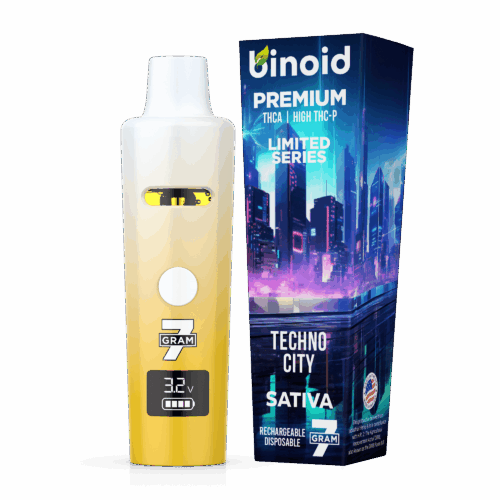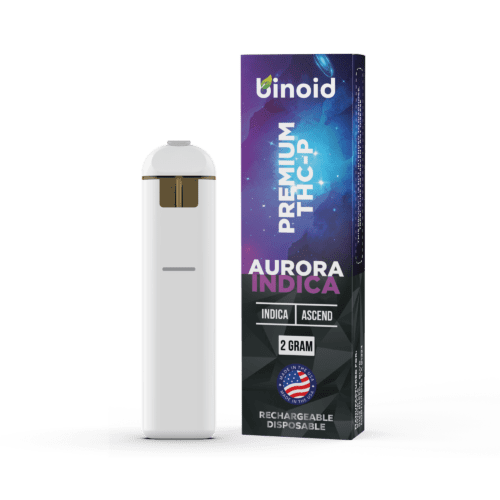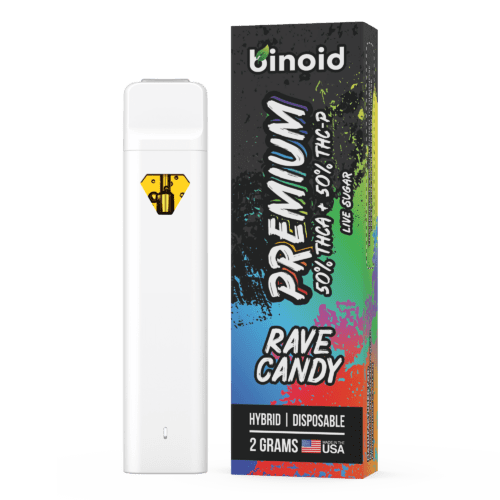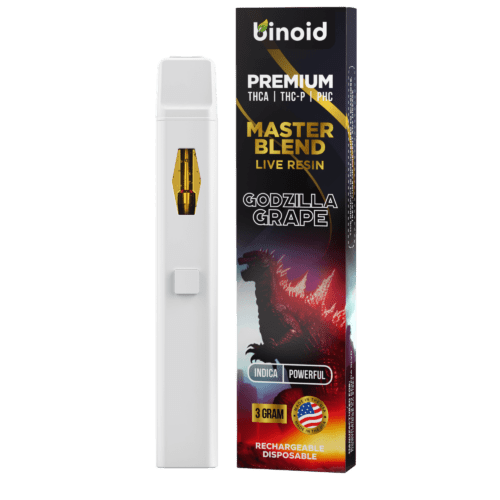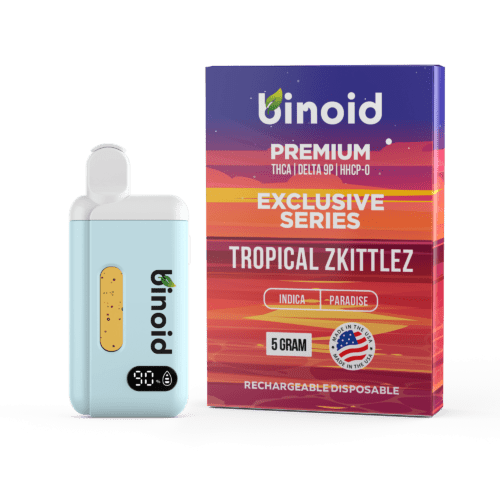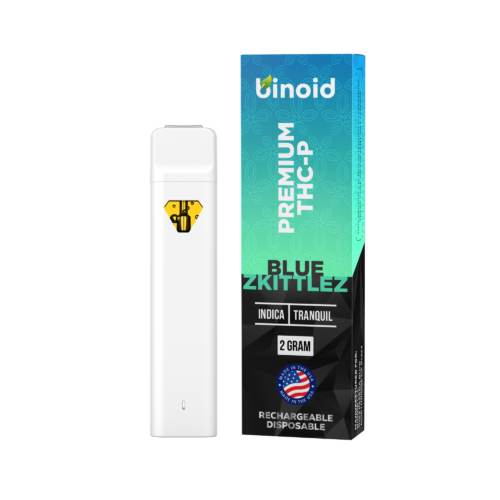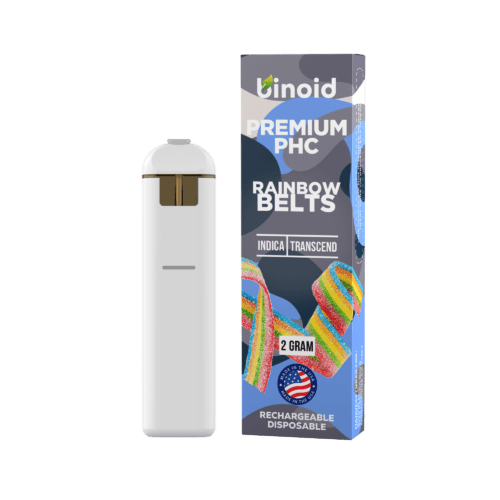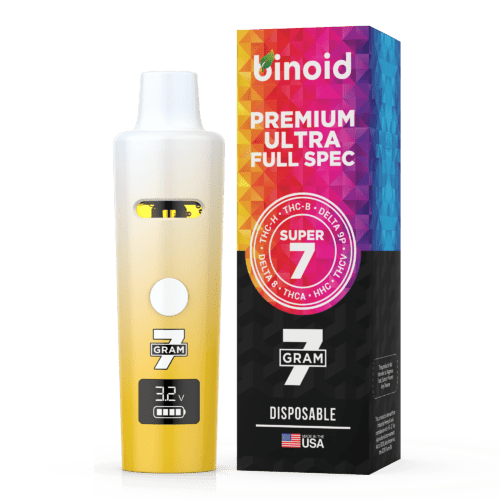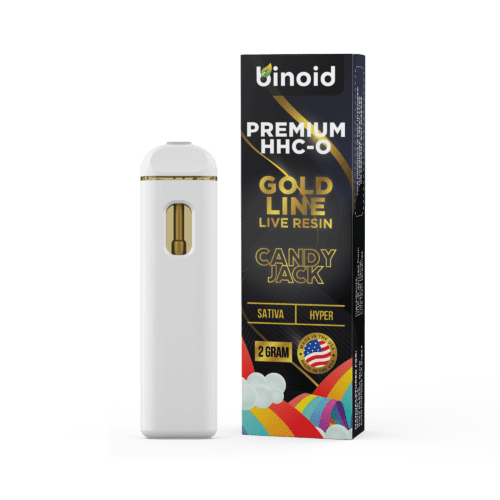In the furthest reaches of the modern hemp frontier, where cannabinoid science pushes the very boundaries of potency and effect, a new class of compounds has emerged for the most experienced and adventurous consumers. This is a realm far beyond the gentle calm of milder cannabinoids, a space reserved for molecules engineered for profound intensity and duration. Here, the conversation shifts from simple relaxation to deep, immersive experiences that demand both respect and understanding.
Within this high-potency landscape, the convenience of disposable vapes has made these powerful experiences more accessible than ever, creating a need for clear and detailed comparisons. This brings us to a heavyweight title fight between two of the market’s most formidable contenders, each utilizing a different scientific principle to achieve its remarkable power. This matchup of THC-P disposable vapes versus PHC disposable vapes is a critical guide for those looking to navigate the pinnacle of hemp-derived potency, where the choice is not just about the journey, but also its ultimate destination.
To Buy Cannabinoid Disposable Vapes Click Here
Recommended products
What are Cannabinoids?
At their most fundamental level, cannabinoids are a class of naturally occurring chemical compounds found predominantly in the resinous trichomes of the cannabis sativa plant, a species that includes both legally distinct hemp and marijuana varieties. These remarkable and structurally diverse molecules are the primary drivers behind the plant’s vast array of effects, interacting in complex and multifaceted ways with the body’s internal systems to produce a wide spectrum of physical and cognitive experiences.
The cannabis plant operates as a veritable phytochemical factory, capable of biosynthesizing over one hundred different cannabinoids, each possessing a unique three-dimensional molecular structure and, consequently, a distinct profile of effects that sets it apart from its botanical brethren. The most historically famous and culturally significant of these is undoubtedly Delta 9 THC (Delta-9-tetrahydrocannabinol), the compound primarily responsible for the traditional, potent intoxicating effects long associated with marijuana.
However, the world of cannabinoids is far more diverse and nuanced than this single molecule, encompassing a broad family of non-intoxicating compounds like Cannabidiol (CBD) and Cannabigerol (CBG), as well as a growing host of other fascinating minor cannabinoids like CBN, THCV, and CBC that are now stepping into the scientific and consumer spotlight thanks to incredible advancements in agricultural cultivation and laboratory extraction and conversion science.
The historical journey to understanding these powerful plant-derived compounds is a captivating story of scientific dedication, serendipitous discovery, and paradigm-shifting revelations that have fundamentally altered our understanding of human biology. For millennia, humanity across countless cultures utilized the cannabis plant for ritual, social, and wellness purposes without any clear understanding of its underlying mechanisms of action, attributing its effects to mystic or spiritual properties. The 20th Century, however, finally began to pull back the curtain and bring these long-held secrets into the clarifying light of modern chemistry.
The groundbreaking and Nobel-worthy work of Israeli chemist Dr. Raphael Mechoulam and his dedicated research team at the Weizmann Institute of Science in the 1960s led to the first-ever isolation and complete chemical synthesis of Delta 9 THC, finally and definitively identifying the specific molecule behind the plant’s renowned psychoactive properties. This monumental discovery was the key that unlocked the door to an entirely new and unexplored field of neuropharmacology, prompting a cascade of further research that would eventually lead to an even more astonishing discovery: the body’s own internal, native cannabinoid system.
This previously unknown biological system, a vast and intricate network of cellular communication and signaling, was fittingly named the endocannabinoid system (ECS) in honor of the very plant that had led to its discovery. The ECS, which is now understood to be composed of a triad of core components—receptors, enzymes, and internally produced cannabinoids known as endocannabinoids—acts as a master regulator or homeostatic modulator, helping to maintain a state of internal balance across nearly all of our most critical physiological systems, from the central nervous system to the immune system. The two primary endocannabinoids produced by our own bodies are anandamide, famously nicknamed the “bliss molecule” for its role in mood, and 2-arachidonoylglycerol (2-AG).
These endocannabinoids are synthesized on demand and interact with a network of specialized receptors, the two most well-studied of which are the CB1 receptors, which are densely concentrated in the brain and central nervous system, and the CB2 receptors, which are found predominantly throughout the peripheral nervous system and on the surface of immune cells. The entire ECS works tirelessly to ensure that our internal environment remains stable and functions optimally.
Phytocannabinoids, the cannabinoids derived from plants like cannabis, possess the remarkable ability to interact directly with our native ECS because their molecular shapes are strikingly similar to our own endocannabinoids, allowing them to bind to, influence, or block the very same CB1 and CB2 receptors. It is this intricate dance, this lock-and-key interaction between plant-derived molecules and our own internal biology, that unlocks the potential for the profound experiences of euphoria, deep relaxation, and heightened sensory perception that cannabinoids can offer. The manner, location, and intensity with which a specific cannabinoid binds to these receptors is the primary factor that dictates its specific effects on the mind and body.
Furthermore, this interaction is not just a simple on/off switch; it is a complex modulation that can be powerfully influenced by the presence of other botanical compounds, leading to the fascinating and widely studied concept known as the “entourage effect”. This theory posits that cannabinoids work in a complex synergy with other plant compounds, like aromatic terpenes and antioxidant flavonoids, to produce a more robust, holistic, and nuanced outcome than any single, isolated compound could ever hope to achieve on its own, emphasizing the importance of whole-plant chemistry.
Recommended products
What are Cannabinoid-Infused Disposable Vapes and How are They Typically Created?
Cannabinoid-infused disposable vapes represent a pinnacle of consumer convenience and sophisticated modern engineering within the rapidly evolving hemp and cannabis markets, offering a seamless, intuitive, and highly accessible way to experience a wide array of novel compounds. At their most basic, they are single-use, all-in-one electronic devices meticulously designed for the efficient inhalation of cannabinoid-rich vapor, thereby eliminating the numerous complexities and the steep learning curve associated with more traditional consumption methods or advanced, reusable vaporizer systems.
Unlike more complex reusable vape setups that require the separate purchase and maintenance of batteries, tanks, atomizers, and coils, a disposable vape comes fully assembled, pre-charged, and precisely pre-filled with a specific amount of cannabinoid distillate, rendering it ready for immediate use straight out of its protective packaging.
This brilliantly streamlined, user-friendly design completely eliminates the need for any ongoing maintenance, messy refilling, or technical knowledge, making it an incredibly accessible entry point for newcomers and a supremely hassle-free option for seasoned connoisseurs alike who place a high value on simplicity, discretion, and portability in their daily lives. The user simply inhales from the mouthpiece, which in most modern models contains a sensor that activates the internal battery, which in turn heats the coil and instantaneously vaporizes the oil, delivering a smooth, flavorful, and inhalable mist directly to the lungs for exceptionally rapid absorption into the bloodstream and a quick onset of effects.
Now, the contemporary market for disposable vapes is characterized by a truly remarkable and ever-growing diversity in aesthetic design, advanced functionality, and construction materials, catering to a vast and varied range of consumer preferences and leveraging the latest technological advancements in microelectronics and material science. This incredible variety ensures that users can find a device that not only delivers their desired cannabinoid experience with precision but also perfectly suits their personal aesthetic, ergonomic preferences, and practical day-to-day needs.
The different types and kinds of disposable vapes available today can be broadly categorized and differentiated by several key features that define their performance and user experience:
Shapes & Sizes: The physical form factor of disposable vapes has evolved significantly from the rudimentary and often inefficient early “cig-a-like” models. Today, by far the most common and popular shape is the sleek, minimalist, and discreet pen-style vape, highly prized for its exceptional portability and its unobtrusive resemblance to a simple writing instrument or stylus. However, innovative manufacturers are increasingly experimenting with a wide variety of other designs, such as compact and palm-friendly box or pod-style devices, which often house larger, more powerful batteries and significantly bigger oil reservoirs for greatly extended use between charges or disposal. Some forward-thinking brands even offer unique, ergonomically shaped disposables meticulously designed for maximum comfort in the hand and a more substantial, premium feel during operation.
Construction Types: The specific materials used in the construction of a disposable vape’s chassis play an absolutely crucial role in its overall durability, its tactile feel in the hand, and its perceived quality, often serving as a key differentiator between entry-level and premium product tiers. Many mass-market models are constructed from durable and lightweight hard plastics like polycarbonate (PC) or PCTG, which are cost-effective and allow for a wide range of colors and finishes. More premium, high-end devices, however, often feature a more robust and luxurious construction, utilizing advanced materials like aircraft-grade aluminum, stainless steel, or die-cast zinc-alloy for the main body. These metal casings not only provide a superior, weightier feel and enhanced durability against drops and daily wear but can also offer better heat dissipation, keeping the device comfortable to hold during prolonged use.
Rechargeable Models: A truly significant and game-changing innovation within the “disposable” category is the widespread introduction of rechargeable models, a feature that has now become nearly ubiquitous for any device containing more than a single gram of oil. While the device is still intended to be disposed of once the cannabinoid oil is fully depleted, these advanced disposables feature an integrated USB port (typically the modern and convenient USB-C). This critical feature allows the user to easily recharge the battery if it happens to run out of power before the oil is fully consumed. This is particularly important for larger capacity disposables (containing 2, 3, 5, or even 7 grams of oil), as it completely eliminates the risk of product being wasted due to a depleted battery, guaranteeing the user can enjoy every last valuable drop of the cannabinoid distillate they paid for.
Draw-Activation and/or Button-Activation: The activation mechanism is a key aspect of the user experience and often dictates the device’s feature set and safety profile. The vast majority of disposable vapes are draw-activated (also known as “auto-draw”), which means they have no external buttons and are activated simply and intuitively by inhaling from the mouthpiece. This design offers the ultimate in simplicity and closely mimics the natural action of smoking. In contrast, some models are button-activated, requiring the user to press and hold a button while inhaling. While slightly less intuitive for absolute beginners, button activation offers far more user control, effectively prevents accidental activation in a pocket or bag, and is often a necessary prerequisite for incorporating more advanced features such as pre-heating functionality or variable voltage settings.
Some that Come with Advanced Features & Functionalities: In an effort to stand out within a fiercely competitive market, many leading brands are now incorporating sophisticated features that were once exclusively found in expensive, advanced, non-disposable vaporizer systems. A very common and highly useful feature is a pre-heat function, typically activated by two or three quick clicks of a button, which gently warms the often-thick cannabinoid oil to an optimal viscosity for a smoother, fuller, and more satisfying first draw, a feature that is especially useful in colder ambient temperatures. Another increasingly popular advanced option is variable voltage or power settings, which allows the user to cycle through different temperature levels with a few button clicks. A lower temperature setting will better preserve the delicate and complex terpene flavors, while a higher temperature setting will produce larger, denser, and more robust vapor clouds for a more powerful effect. Some of the most cutting-edge disposables now even include small, bright OLED or LCD screens that display critical information like the precise remaining battery percentage, the current power setting, and even an e-liquid level indicator.
The creation of a high-quality cannabinoid-infused disposable vape is a meticulous, multi-stage, and capital-intensive process that seamlessly combines precision micro-engineering, sophisticated botanical extraction science, and careful formulation chemistry, all governed by rigorous quality control protocols at every step. This complex journey from raw materials to a finished consumer product can be logically broken down into three primary, interdependent phases: the manufacturing of the physical vape device hardware, the creation of the potent cannabinoid-infused vape oil, and finally, the high-precision assembly and compliant packaging of the finished product.
Recommended products
Part 1: The Production of the Disposable Vape Device
The physical vape device itself, despite its simple appearance, is a miniature marvel of modern technology. Its production is a complex process of global component sourcing and precision robotic assembly that demands deep expertise in electronics, materials science, and industrial design. It begins with an intensive design and engineering phase, where teams of engineers determine the ideal form factor, battery capacity (mAh), atomizer resistance (ohms), and airflow characteristics required to efficiently and flavorfully vaporize a specific viscosity of oil. The outer housing, or chassis, is then mass-produced using techniques like high-pressure injection molding for plastics or high-precision CNC machining and anodizing for premium aluminum devices. Simultaneously, the electronic heart of the device is sourced from specialized manufacturers and assembled.
This includes a certified lithium-ion polymer (LiPo) battery equipped with a protection circuit module (PCM) for safety, a microcontroller unit (MCU) or chipset that acts as the device’s brain, and the all-important atomizer. The atomizer’s core is a resistance wire (typically Kanthal) wrapped into a coil and paired with a wicking material. Increasingly, higher-quality disposables are using porous ceramic wicks, which can withstand high temperatures without combusting, thus providing a purer, cleaner flavor profile. These assembled components are then brought together on a sterile assembly line and individually tested for electronic functionality.
Part 2: The Creation of the Cannabinoid-Infused Vape Oil
This part of the process is a sophisticated blend of advanced agriculture and cutting-edge chemistry, transforming raw hemp plant material into a highly potent, purified, and safe-to-inhale oil. It starts with sourcing high-quality, legally compliant hemp biomass, often from farms using organic or regenerative practices to ensure the material is free from pesticides and heavy metals. Once harvested, the hemp is dried and subjected to a primary extraction process, with supercritical CO2 and cryogenic ethanol extraction being the industry gold standards for their efficiency and safety. The resulting crude oil, while rich in cannabinoids, is unrefined and must undergo several crucial purification steps. This includes winterization, where the crude oil is mixed with ethanol and frozen to cause fats and waxes to congeal and be filtered out.
For a target cannabinoid like Delta 8, the next step involves a chemical process called isomerization, where purified, hemp-derived CBD is safely converted into Delta 8 THC using an acid catalyst in a controlled laboratory environment. The resulting mixture is then thoroughly cleansed of all solvents and byproducts using multi-stage, short-path distillation under a deep vacuum. This process separates and purifies the cannabinoids based on their different boiling points, resulting in a final distillate of exceptional purity, often exceeding 95% potency. The final step is formulation, where this incredibly thick, clear distillate is gently heated and infused with a precisely measured blend of cannabis-derived or botanical terpenes to create the desired strain-specific flavor and effect profile.
Part 3: Bringing It All Together
The final stage is a delicate marriage of precision-engineered hardware and meticulously formulated oil, a process that demands the sterile conditions of a laboratory and the efficiency of modern automated manufacturing, all conducted within a highly controlled ISO-certified cleanroom environment to prevent any airborne contamination. The purified and formulated cannabinoid oil is loaded into automated, high-precision filling machines, such as piston fillers or peristaltic pumps, which are calibrated to dispense the exact volume of oil into each device with microscopic tolerance. The empty, electronically tested disposable vape devices move along a conveyor belt to the filling station, where a stainless-steel nozzle injects the oil directly into the device’s sealed reservoir.
Immediately after filling, the device is permanently capped and sealed with a press-fit mouthpiece containing multiple silicone gaskets to create a truly hermetic seal. This critical step not only prevents the valuable oil from leaking but also protects it from long-term exposure to oxygen, which can degrade the cannabinoids and ruin the delicate terpene flavors. Once sealed, the device undergoes another battery of stringent quality control checks. Most importantly, a statistical sample of the filled devices is sent back to an independent, accredited third-party lab to verify the final potency and purity of the oil inside the finished product. After passing all tests, the disposables are packaged in compliance with all state-specific regulations, often with a QR code linking to the lab report for that specific batch, ensuring full consumer transparency and traceability.
Recommended products
Breaking Down Today’s Cannabinoid Disposable Vapes Matchup: THC-P Disposables vs. PHC Disposables
With a comprehensive understanding of cannabinoid science and vape manufacturing, we can now step into the arena for a true heavyweight bout: the head-to-head comparison of THC-P and PHC disposables. This is not a matchup for the casual user; it is a deep dive into two of the most powerful and scientifically advanced compounds available on the hemp market today. On one side, we have THC-P, a naturally occurring cannabinoid amplified by science, renowned for its incredible binding affinity and its ability to produce an experience of unparalleled intensity. On the other stands PHC, a novel synthetic compound that functions as a prodrug, designed to deliver an extremely potent and exceptionally long-lasting edible-like experience through inhalation. Choosing between them is a critical decision based on a user’s tolerance, their desired duration, and their preference for either instantaneous intensity or a slow-building, marathon-like journey.
Contender #1: THC-P Disposables
Stepping into the ring as the undisputed heavyweight contender, THC-P disposables represent the absolute cutting edge of high-potency cannabinoid products available on the hemp market today. These advanced devices are meticulously engineered for the seasoned connoisseur, the high-tolerance user, and the adventurous spirit who is actively seeking an experience that dramatically transcends the ordinary boundaries of psychoactivity. THC-P, or Tetrahydrocannabiphorol, is a cannabinoid that has garnered significant attention and notoriety for its truly remarkable and formidable strength, with anecdotal and scientific evidence suggesting it is many times more potent than conventional Delta 9 THC. A THC-P disposable vape is not a tool designed for subtle relaxation or mild mood enhancement; it is a dedicated vehicle for embarking on a powerful and profound journey into the depths of euphoria, introspection, and significantly altered perception. Its effects are widely known to be incredibly intense, exceptionally long-lasting, and deeply immersive, making it a choice that demands the utmost respect and careful, deliberate consideration before use.
The immense and almost unbelievable power of THC-P lies in its unique and slightly elongated molecular structure, a subtle difference that has massive implications for its biological activity. Discovered by a team of Italian researchers in late 2019 who were analyzing a specific strain of cannabis, THC-P (Δ9−Tetrahydrocannabiphorol) is a naturally occurring cannabinoid, but like Delta 8, it is found in such vanishingly small concentrations that it must be created in a laboratory setting via advanced chemical synthesis. What makes THC-P so profoundly different is the length of its alkyl side chain—a tail-like group of carbon atoms extending from the main body of the molecule that is critical for binding to cannabinoid receptors. While the common THC variants, Delta 8 and Delta 9, have a pentyl side chain (five carbon atoms), THC-P boasts a heptyl side chain (seven carbon atoms). For decades, scientists believed the pentyl chain was the optimal length for CB1 receptor activation. The discovery of THC-P shattered this assumption.
This two-carbon longer tail allows the molecule to “grip” the CB1 receptor far more securely and effectively. In fact, the original scientific paper on its discovery reported that THC-P has a binding affinity for the CB1 receptor that is over 30 times stronger than that of Delta 9 THC. This staggering difference in binding affinity is the direct cause of its vastly amplified and potent effects, leading to a much more profound and long-lasting activation of the receptor and, consequently, a much more intense experience.
Given the extreme potency that defines the THC-P experience, the design and formulation of THC-P disposable vapes are often approached with a specific and heightened focus on control, reliability, and performance, ensuring that even very small, precise amounts can be delivered effectively and consistently to the user. While these devices share many of the same physical forms and features as their Delta 8 counterparts, the context of their intense use case often influences which features and blend formulations are prioritized by manufacturers looking to create a premium and safe product. The different kinds and types of THC-P disposables that are available on the market clearly reflect this deliberate focus on delivering a controllable, high-intensity experience to a discerning audience:
Shapes & Sizes: THC-P disposables come in all the familiar form factors, from sleek vape pens to more substantial box-style devices. However, because of the cannabinoid’s potency, even a 1-gram disposable can provide a significant number of powerful experiences. Larger devices containing 2 grams or more are common, often featuring powerful batteries to ensure consistent performance throughout the life of the potent oil.
How They’re Constructed: Brands offering THC-P products often position them as premium, and the device construction reflects this. It is common to see THC-P disposables housed in sturdy metal-alloy chassis or high-grade, durable plastics. The design often emphasizes a quality feel, robust construction, and reliable airflow to handle the vaporization of potentially thick, cannabinoid-rich oils.
Rechargeable or Non-Rechargeable: Due to the high value of THC-P distillate and the desire to ensure every bit can be used, virtually all THC-P disposables on the market are rechargeable. A USB-C charging port has become the industry standard, providing fast and convenient recharging to prevent the issue of a dead battery trapping valuable oil inside the device.
Draw-Activated and/or Button-Activated: While simple draw-activated models are available, button-activated THC-P disposables are very common. The button offers an extra layer of safety, preventing the powerful device from activating accidentally in a pocket or bag. Furthermore, the button is often necessary to control advanced features that allow for a more customized session.
Possible Advanced Features & Functionalities: Advanced features are particularly useful for a potent cannabinoid like THC-P. A pre-heat function is essential for ensuring the oil is at the right viscosity for a smooth draw, preventing clogs and delivering a consistent dose. Variable voltage settings are even more critical, as they allow a user to start with a very low-temperature puff to gauge the effects before committing to a larger, more powerful, high-temperature hit.
Potential Use of Live Resin or Live Rosin: The pairing of THC-P with live resin or live rosin is a match made for the connoisseur. The incredibly potent and profound effects of THC-P are complemented perfectly by the rich, authentic, and complex terpene profiles of these full-spectrum extracts. This combination aims to deliver the ultimate sensory experience in both flavor and effect, creating a truly top-shelf product.
Strain-Infused: As with other cannabinoid products, strain-specific terpene profiles are crucial for shaping the THC-P experience. A Sativa blend might offer an intensely energetic and psychedelic-like cerebral journey, while an Indica blend could lead to an overwhelmingly powerful and deeply tranquil body sensation. Hybrid strains aim to provide a blend of these intense effects, creating a comprehensive and multifaceted experience.
Occasionally Combined with Certain Mushrooms: The synergy-seeking trend of combining cannabinoids with functional mushroom extracts is also present in the THC-P space. While still a niche category, a blend of potent THC-P with extracts like Cordyceps might be formulated to create an experience of intense energy and euphoria, though this remains an experimental area of product development.
Sometimes Combined with Other Cannabinoids: Pure THC-P is so potent that it is almost always blended with other cannabinoids. This is done not only to create a more well-rounded and less jarring experience but also for formulation purposes. These blends are strategically crafted to modulate the intense power of THC-P:
Non-Intoxicating: Adding CBD, CBN, or CBG to a THC-P blend can help to provide a balancing or grounding effect, potentially smoothing out the intense peak of the experience and adding its own subtle character.
Mild Potency: Blending THC-P with milder cannabinoids like Delta 10 or THCV is less common but could be used to add a specific energetic or appetite-suppressing nuance to the overall powerful effect.
Moderate Potency: This is the most common blending strategy. THC-P is often added as a potent “kicker” to a base of a more moderately potent cannabinoid like Delta 8, Delta 9, or THCA. A common ratio might be a mix of 80-90% Delta 8 with 10-20% THC-P. This creates a product that feels familiar at first but then builds to a level of intensity far beyond what Delta 8 could achieve alone.
Strong Potency: For the most extreme experiences, manufacturers create “power blends” that combine THC-P with other highly potent cannabinoids like THC-JD, HHC-P, or THC-H. These disposables are designed for maximum intensity and are only suitable for users with the highest tolerances.
The overall effects of a THC-P disposable vape are defined by their intensity and longevity. The onset may be slower than other cannabinoids, sometimes taking 15-30 minutes or more to fully reveal itself, but once it arrives, the experience is profound. Users report powerful waves of euphoria, significant perceptual shifts, and a deep, immersive mental and physical sensation that can last for many hours. When vaped in a blend with Delta 8, the initial effects might feel like a familiar Delta 8 experience, but this gives way to a crescendo of potency as the THC-P takes hold, elevating the experience to a completely different level. A THC-P disposable infused with live resin and a Sativa terpene profile can produce a vibrant, creative, and almost psychedelic-like state, while an Indica blend can result in an experience of deep, meditative-like tranquility and powerful physical bliss that is best enjoyed in a comfortable and safe setting with no obligations.
Recommended products
Pros & Cons
The immense potency of THC-P disposables brings with it a very distinct set of pros and cons that set it far apart from milder options. These factors are critical for anyone considering venturing into this high-strength territory.
Pros:
Exceptional Potency: For the specific demographic of users who have developed a very high tolerance or are actively seeking the most powerful psychoactive experience legally available from hemp, THC-P’s incredible strength is its defining feature. It is capable of delivering profound, deeply felt effects that can break through tolerance ceilings that other cannabinoids simply cannot touch, offering a truly next-level experience.
Profound Euphoria: THC-P is particularly renowned for its ability to produce an intense, enveloping, and often exceptionally long-lasting state of bliss, contentment, and profound euphoria. For users seeking deep recreational enjoyment, significant mood elevation, or a powerful tool for introspection in a responsible and safe setting, its euphoric potential is second to none in the cannabinoid world.
Long-Lasting Effects: The experience induced by THC-P typically has a much longer duration compared to that of Delta 8 or even Delta 9 THC, with effects potentially lasting for six, eight, or even more hours for some individuals. This can be a significant benefit for users who desire a prolonged, uninterrupted session without the need to re-dose frequently, offering a sustained experience from a single session.
Cost-Effective for High-Tolerance Users: Because it is so incredibly potent, a very small amount—often just a single puff—of THC-P is needed to produce strong, noticeable effects. This means that a single disposable vape containing THC-P can last a high-tolerance user a very long time, making it potentially more economical in the long run than consuming larger quantities of less potent cannabinoids to achieve a similar effect.
Novelty and Exploration: For seasoned and adventurous cannabis enthusiasts who may feel they have explored all that traditional THC has to offer, THC-P presents an entirely new and unique psychoactive landscape. It provides a different character, depth, and texture of experience that can reinvigorate a sense of novelty, discovery, and appreciation for the complexities of cannabinoid science.
Ideal for Blending: Its overwhelming power makes THC-P an ideal “booster” or potent additive for cannabinoid blends. Manufacturers can use a base of a milder cannabinoid like Delta 8 to shape the overall character of the experience, and then add a small percentage of THC-P to provide an intense peak and extended duration, creating complex and targeted formulations.
Fast-Acting Delivery Method: The disposable vape format allows the potent effects of THC-P to be felt relatively quickly through inhalation, typically within 5-15 minutes. This provides a greater degree of control over the initial dosing and the intensity of the onset compared to edibles, which can take an hour or more to take effect and are much easier to overconsume accidentally.
Potentially Enhanced Entourage Effect: When the immense power of THC-P is combined with full-spectrum extracts like live resin, which are rich in a complex array of minor cannabinoids and terpenes, its powerful action on the CB1 receptor may catalyze a uniquely deep and synergistic entourage effect. The theory is that THC-P’s strong activation primes the ECS to be more receptive to the nuances of the other compounds.
Cons:
Overwhelming for Beginners: The intense, sometimes disorienting, and powerfully introspective psychoactivity of THC-P is highly likely to be an overwhelming, uncomfortable, or even frightening experience for new users, those with a low tolerance, or individuals prone to anxiety. It is definitively not a cannabinoid suitable for beginners and should only be approached with extreme caution and respect.
Potential for Intense Side Effects: The extremely high potency of THC-P significantly increases not just the likelihood but also the potential severity of undesirable side effects. These can include severe dry mouth and red eyes, dizziness, an uncomfortably rapid heart rate, and heightened feelings of paranoia, anxiety, or the deeply unsettling sensation of being “stuck” in an overly intense high.
“Next-Day” Grogginess: Due to the exceptionally long duration of its effects and its powerful interaction with the nervous system, many users report feeling lingering effects the following day. This “cannabinoid hangover” can manifest as feeling groggy, mentally hazy, demotivated, or generally “out of it” well into the morning after using THC-P, particularly if consumed in the evening.
Limited Research: As a cannabinoid that was only scientifically identified and isolated in late 2019, there is an extremely limited body of scientific research on its full range of effects, its metabolic pathway, and its long-term safety profile. This stands in stark contrast to more well-studied cannabinoids like Delta 9 THC and CBD, which have been the subject of thousands of studies over several decades.
Recommended products
Contender #2: PHC Disposables
Stepping into the spotlight from the advanced frontier of cannabinoid chemistry, PHC disposables have rapidly gained a reputation as a powerhouse option for experienced users seeking an exceptionally potent and long-lasting experience. The primary allure of a PHC disposable is its unique mechanism of action; it functions as a prodrug that, once consumed, is converted by the body into an incredibly powerful and highly bioavailable form of THC.
This results in a delayed onset followed by a profound, deeply immersive, and remarkably durable wave of euphoria and relaxation. A PHC disposable is not for the faint of heart or the inexperienced user; it is a dedicated tool for those with a high tolerance who are looking to explore the upper echelons of cannabinoid potency and duration from a convenient, inhalable format.
At its chemical core, PHC, also known as Hydrox4phc, is a synthetic cannabinoid that is created through a multi-step laboratory process. It is derived from Delta 9 THC Acetate (THC-O), which itself is synthesized from hemp-derived Delta 9 THC. The defining characteristic of PHC and its parent compound is that it acts as a “prodrug.” This means the molecule as inhaled is largely inactive. Its true power is unlocked only after it has been metabolized by enzymes in the body, a process called deacetylation.
This metabolic transformation converts PHC into 11-hydroxy-THC, which is the same highly potent and long-lasting metabolite that the liver produces when a person ingests a traditional cannabis edible. This unique metabolic pathway is the key to understanding PHC’s effects: the delayed onset, the significant potency (as 11-hydroxy-THC is much more powerful than Delta 9 THC), and the extended duration are all hallmarks of an edible-like experience, now made accessible through inhalation.
The market for PHC disposables, while newer and more niche than that for Delta 8, is specifically geared towards the high-potency segment of consumers. Brands that offer PHC products are typically focused on delivering maximum intensity and performance, a focus that is reflected in the design of their devices and the formulation of their oils. The different kinds and types of PHC disposables available on the market reflect this deliberate positioning:
Shapes & Sizes: Because PHC is incredibly potent, even a 1-gram or 2-gram disposable can provide a very large number of powerful sessions. Consequently, PHC disposables are available in all modern form factors, from sleek pens to more substantial box mods that house powerful batteries capable of lasting through the entire volume of the potent oil.
How They’re Constructed: As a premium and high-potency product, PHC disposables are almost always housed in high-quality, durable materials. Sturdy metal-alloy chassis or high-grade, impact-resistant plastics are the norm, ensuring the device can withstand daily use. The emphasis is on robust construction and reliable, high-performance internal components to effectively vaporize the valuable oil.
Rechargeable or Non-Rechargeable: Due to the high value and potency of PHC distillate, virtually every PHC disposable on the market is rechargeable. A dead battery cannot be the reason a consumer is unable to finish their product, so a USB-C charging port is a standard and essential feature, providing fast and convenient power.
Draw-Activated and/or Button-Activated: While simple draw-activated models exist, button-activated PHC disposables are very common and often preferred. The button provides an crucial layer of safety, preventing the powerful device from firing accidentally. Furthermore, the button is often necessary to control the advanced features that are common on these high-performance devices.
Possible Advanced Features & Functionalities: Advanced features are almost a necessity for a potent and specialized cannabinoid like PHC. A pre-heat function is critical for warming the thick oil to an optimal viscosity, ensuring a smooth draw and preventing clogs. Variable voltage settings are even more important, as they allow a user to start with a very small, low-temperature puff to carefully gauge the effects before committing to a larger, more powerful hit.
Potential Use of Live Resin or Live Rosin: Pairing the intense, long-lasting effects of PHC with the authentic, full-spectrum terpene profiles of live resin or live rosin is a popular strategy for creating a top-tier product. This combination aims to deliver the ultimate sensory experience, where the profound effects of PHC are complemented by the rich, complex flavors of premium cannabis extracts.
Strain-Infused: As with all cannabinoid products, strain-specific terpene profiles are crucial for shaping the PHC experience. A Sativa blend might offer an intensely energetic and long-lasting cerebral journey, while an Indica blend could lead to an overwhelmingly powerful and deeply tranquil body sensation that lasts for many hours, making it ideal for a relaxing day with no obligations.
Occasionally Combined with Certain Mushrooms: While still a niche category, the trend of blending cannabinoids with functional mushroom extracts has found its way into the PHC space. A blend of potent PHC with an extract like Cordyceps might be formulated to create an experience of intense energy and euphoria, though this remains an experimental area of product development.
Sometimes Combined with Other Cannabinoids: Pure PHC is so potent that it is almost always blended with other cannabinoids to create a more well-rounded and less jarring experience. These blends are strategically crafted to modulate the immense power of PHC:
Non-Intoxicating: Adding non-intoxicating cannabinoids to a PHC blend can help to provide a balancing or grounding effect, potentially smoothing out the intense peak of the experience.
Mild Potency: Blending PHC with milder cannabinoids is less common but could be used to add a specific nuance to the overall powerful effect.
Moderate Potency: This is the most common blending strategy. PHC is often added as a potent “kicker” to a base of a more moderately potent cannabinoid like Delta 8. This creates a product that feels more familiar at first but then builds to a level of intensity far beyond what the base cannabinoid could achieve alone.
Strong Potency: For the most extreme experiences, manufacturers create “power blends” that combine PHC with other highly potent cannabinoids. These disposables are designed for maximum intensity and are only suitable for users with the highest tolerances.
The overall effects of a PHC disposable vape are defined by their intensity and longevity, closely mimicking a strong edible. Because it is a prodrug, the onset of effects is often delayed, taking anywhere from 15 to 30 minutes or more to fully manifest. Once the effects begin, they are profound, delivering powerful waves of euphoria, significant perceptual shifts, and a deep, immersive mental and physical sensation that can last for many hours. When vaped in a blend with a milder cannabinoid, the initial effects might feel familiar, but this gives way to a crescendo of potency as the metabolized PHC takes hold, elevating the experience to a completely different level.
A Sativa-dominant PHC disposable can produce a vibrant, creative, and almost psychedelic-like state, while an Indica blend can result in an experience of deep, meditative-like tranquility and powerful physical bliss that is best enjoyed in a comfortable and safe setting.
Recommended products
Pros & Cons
PHC disposables, with their unique prodrug mechanism and immense potency, bring a very distinct set of pros and cons that set them far apart from milder, more conventional options. These factors are critical for anyone considering venturing into this high-strength territory.
Pros:
Exceptional Potency: For the specific demographic of users who have developed a very high tolerance or are actively seeking the most powerful psychoactive experience legally available from hemp, PHC’s incredible strength is its defining feature. It is capable of delivering profound, deeply felt effects that can break through tolerance ceilings that other cannabinoids simply cannot touch.
Extremely Long-Lasting Effects: Because PHC metabolizes into 11-hydroxy-THC, its effects have a much longer duration than inhaled cannabinoids like Delta 8, with experiences potentially lasting for six, eight, or even more hours for some individuals. This is a significant benefit for users who desire a prolonged, uninterrupted session without the need to re-dose frequently.
Unique “Edible-Like” Experience: PHC offers the unique ability to achieve an effect profile similar to that of a strong edible but through the rapid and convenient delivery method of a vape. This combination of an edible’s intensity and duration with a vape’s convenience is a major draw for many experienced users.
Profound Euphoria and Bliss: PHC is particularly renowned for its ability to produce an intense, enveloping, and exceptionally long-lasting state of bliss, contentment, and profound euphoria. For users seeking deep recreational enjoyment or significant mood elevation, its euphoric potential is second to none in the hemp-derived world.
Ideal for High-Tolerance Users: The sheer power of PHC makes it an ideal choice for consumers who find that other cannabinoids, including traditional Delta 9 THC, are no longer providing the level of effects they desire. It offers a truly next-level experience that can satisfy even the most seasoned users.
Cost-Effective in the Long Run: Because it is so incredibly potent, a very small amount—often just a single puff—of PHC is needed to produce strong, long-lasting effects. This means that a single disposable vape containing PHC can last a high-tolerance user a very long time, making it potentially more economical than consuming larger quantities of less potent cannabinoids.
Novelty and Advanced Chemistry: For enthusiasts fascinated by the science of cannabinoids, PHC represents the cutting edge of what is possible. Its unique prodrug mechanism and synthetic pathway offer a novel experience that can reinvigorate a sense of discovery and appreciation for the complexities of cannabinoid chemistry.
Excellent for Potent Blends: Its overwhelming power makes PHC an ideal “booster” or potent additive for cannabinoid blends. Manufacturers can use a base of a milder cannabinoid to shape the overall character of the experience, and then add a small percentage of PHC to provide an intense peak and greatly extended duration.
Cons:
Completely Overwhelming for Beginners: The intense, sometimes disorienting, and powerfully psychoactive nature of PHC is highly likely to be an overwhelming, uncomfortable, or even frightening experience for new users, those with a low tolerance, or individuals prone to anxiety. It is definitively not a cannabinoid suitable for beginners and must be approached with extreme caution.
Delayed Onset Increases Risk of Overconsumption: Because PHC is a prodrug, its effects are not felt immediately. This significant delay between inhalation and effect (up to 30 minutes or more) creates a high risk of accidental overconsumption, as an impatient user might take multiple puffs before the first one has even taken effect, leading to an uncomfortably intense experience later on.
Synthetic Nature and Lack of Research: PHC is a synthetic cannabinoid, and there is an extremely limited body of scientific research on its full range of effects, its metabolic byproducts, and its long-term safety profile. This stands in stark contrast to naturally occurring cannabinoids that have been the subject of study for decades, introducing a significant element of the unknown.
Precarious Legal Status: As a synthetic analogue of THC, the legal status of PHC is highly ambiguous and precarious. While it is derived from hemp, it could potentially be considered a controlled substance analogue under the Federal Analogue Act, and its legality is highly dependent on the specific laws of a given state, which are subject to change.
Recommended products
Other Key Things You Should Know About When Choosing Either THC-P Disposable Vapes or PHC Disposable Vapes
Navigating the choice between the instantaneous intensity of THC-P and the marathon-like power of PHC involves more than just understanding their core effects. The decision to use such high-potency compounds rests on a foundation of profound personal responsibility, deep product knowledge, and a clear understanding of your own intentions and physiological limits. The modern cannabinoid market, while innovative and exciting, is also complex and requires a discerning eye to ensure a safe and positive experience.
So, before making a purchase, it is absolutely crucial to consider a range of factors from the legal landscape and brand reputation to the intricacies of product testing and your own unique body chemistry. Taking the time to educate yourself on these key points below will empower you to make an informed decision and fully enjoy the unique journey that each of these powerful cannabinoids has to offer.
Third-Party Lab Testing is Non-Negotiable: This is the absolute, unequivocal, most critical factor when purchasing any cannabinoid product, especially high-potency synthetics, in the current unregulated market. A reputable, trustworthy, and transparent brand will always provide up-to-date, comprehensive third-party lab reports, often called a Certificate of Analysis (COA), for every single batch of their products. This crucial COA should be easily and immediately accessible, usually via a QR code printed directly on the product’s packaging. When you scan the code and review this technical document, you must diligently verify both the product’s potency (confirming that the advertised amount of THC-P or PHC is accurate) and, even more importantly, its purity. The purity panel is a full and comprehensive safety screening for a battery of harmful potential contaminants, including residual solvents left over from the extraction process, toxic heavy metals like lead and mercury which can be absorbed by the hemp plant from the soil, harmful pesticides used during cultivation, and dangerous mycotoxins from mold. If a brand cannot or will not provide a recent, full-panel COA from an accredited lab for the specific product you are considering, do not, under any circumstances, buy their product.
Understand the Legal Landscape (Federal vs. State): While the 2018 Farm Bill made hemp and its derivatives federally legal, this federal law does not supersede the authority of individual states to create their own, often stricter, laws. As a result, many states have passed their own legislation specifically targeting intoxicating cannabinoids like THC-P and novel synthetic compounds like PHC. The legal status can be incredibly confusing, varies wildly from state to state, and is in a constant state of flux as lawmakers react to the evolving market. Some states have outright banned these substances, while others have implemented strict regulations. Before you even attempt to purchase these products, you must perform your own due diligence and thoroughly research the specific, current laws and regulations in your state and local jurisdiction. Ignorance of local law is not a valid legal defense, and you do not want to risk serious legal repercussions.
Start Low and Go Slow Is an Absolute Command: This well-known mantra is essential advice for consuming all psychoactive substances, but for compounds of this magnitude, it is an absolute and non-negotiable rule. When trying a new disposable vape for the very first time, you must begin with the smallest possible puff—a short, one-second inhalation is more than sufficient. Then, put the device down and be patient. For THC-P, it is crucial to wait at least 20 to 30 minutes to fully and accurately assess the effects. For PHC, with its delayed onset, you must wait even longer, at least 45 to 60 minutes, before even considering a second puff. The delayed onset of PHC in particular can easily and frequently lead to accidental overconsumption. This patient, methodical, and responsible approach allows you to find your own personal minimum effective dose and safely avoid an intensely uncomfortable or frightening experience.
Internal Hardware Quality: The core performance, long-term safety, and day-to-day reliability of a disposable vape are dictated entirely by the quality of its internal hardware, a factor that clearly separates premium products from cheap, unreliable, and potentially dangerous imitators. The atomizer, which is the engine of the device, is of paramount importance. While many cheap brands use simple wire coils wrapped around a cotton or silica wick, this outdated design carries a higher risk of scorching the oil if the wick dries out, which creates a harsh, burnt taste and potentially harmful byproducts. In contrast, superior devices utilize advanced ceramic core atomizers. This modern design provides exceptionally even heating and virtually eliminates the risk of a burnt hit, thus preserving the pure, unadulterated flavor of the cannabinoids and terpenes. The quality of the battery is equally critical for both safety and the overall user experience. A reputable device will use a UL or CE-certified lithium-ion battery and will include a power regulation chipset that provides a consistent voltage output throughout the battery’s charge cycle.
External Quality and the Ability to Handle Daily Usage: While the internal components dictate the device’s performance, the external build quality determines the device’s lifespan and its reliability during the rigors of everyday use. A disposable vape is, by its very nature, a portable item, destined to be carried in pockets, purses, and bags where it will inevitably encounter keys, coins, and the occasional accidental drop. A device constructed from thin, brittle, low-grade plastic may crack or break easily, leading to messy leaks or complete device failure. Therefore, you should look for devices that feel solid, sturdy, and well-constructed in your hand, with no creaking, rattling, or flexing when you handle them. Vapes with a metal chassis made from aluminum or zinc-alloy, or those made from high-grade, impact-resistant polycarbonate, will offer far greater durability and longevity. You should also pay close attention to the seams and the structural integrity of the mouthpiece; a poorly assembled device can develop leaks over time or allow dust and pocket lint to enter the airflow path.
Advanced Features & Functionalities: Beyond the basic components, many modern and premium disposables offer a suite of advanced features that give the user far greater control and allow them to tailor each session to their precise liking. A pre-heat function is an invaluable feature for devices containing the characteristically thick distillates of THC-P and PHC, as it gently warms the oil to prevent clogs and ensure a smooth, effortless draw from the very first inhale. Furthermore, the inclusion of variable voltage or power settings enables you to easily switch between different temperature levels; a lower setting is ideal for a cooler, more flavorful vapor, while a higher setting generates warmer, denser clouds for a more powerful and rapid effect. Pushing the boundaries of disposable technology even further, some of the most premium devices now incorporate small, integrated digital display screens that provide at-a-glance information such as a precise battery life percentage, the current voltage setting, and even an e-liquid level indicator, finally taking the guesswork out of knowing when your device is running low.
How the Device Feels When Holding/Gripping It: Beyond the internal technical specifications, the external industrial design, the choice of materials, and the overall ergonomics of the device can significantly impact the total user experience in ways that are often overlooked. Some users may prefer the ultra-discreet, feather-light feel of a slim, cylindrical plastic pen that easily disappears in a pocket. Others might greatly enjoy the more substantial, premium feel of a device with a CNC-machined aluminum or hefty zinc-alloy chassis, which feels cooler to the touch and has a satisfying weight. The tactile experience of physically using the device is a significant part of the overall ritual, and choosing a device that feels good in your hand can make every session that much more enjoyable.
Consider Your Tolerance and Experience Level: Your personal history with cannabis and psychoactive cannabinoids should be the primary and most important guide in your decision-making process. If you are entirely new to THC, know that you have a low tolerance, or are aware that you are prone to feelings of anxiety, neither of these compounds are an appropriate or safe starting point. These disposables are specifically designed for and marketed to individuals with a very high, established tolerance who may find that other cannabinoids are no longer effective. Using a potent THC-P or PHC product without significant prior experience is a near-guarantee for an overwhelming, unpleasant, and potentially negative encounter. You must be honest with yourself about your true experience level.
The Importance of Strain and Terpenes: Do not underestimate the absolutely crucial role that terpenes play in shaping your entire psychoactive experience. The very same base cannabinoid can feel and affect you in vastly different ways depending on the accompanying terpene profile of the specific product. If you are seeking an energizing, creative, and uplifting experience for daytime use, you should look for Sativa-dominant strains. If looking for deep relaxation, tranquility, and calming sensations for evening use, you should seek out Indica-dominant strains. Taking the time to read detailed strain descriptions can help you customize your session far beyond the simple binary choice between THC-P and PHC.
Be Aware of Potential Drug Test Implications: This is a critical and often misunderstood point that can have serious real-world consequences. Using either THC-P or PHC will almost certainly cause you to fail a standard drug test for cannabis. These common tests, used by employers and other organizations, look for the presence of THC metabolites in your system and are not sophisticated enough to differentiate between various THC isomers and their synthetic derivatives. Your body processes these compounds into very similar and often indistinguishable metabolites. Therefore, if you are subject to any form of drug testing for employment, athletics, or legal reasons, you must completely and totally abstain from all THC-related cannabinoids.
Set and Setting are Key: The psychological concept of “set and setting,” which refers to your physical environment (“setting”) and your internal mental state (“set”), plays a massive and undeniable role in shaping your psychoactive experience. For cannabinoids of this power, this is doubly true and critically important for ensuring a positive outcome. Always ensure you are in a safe, comfortable, and familiar place where you can fully relax without any pressing responsibilities or potential interruptions. Furthermore, being in a calm, positive, and receptive state of mind before you begin your session can help to steer the experience in a positive direction. Using a powerful substance for the first time while in a stressful, chaotic, or unfamiliar environment can significantly increase the risk of feeling anxious, paranoid, or overwhelmed.
Research Brand Reputation and Transparency: In an unregulated market, brand reputation is your best guide. Look for brands that have a long-standing positive presence in the community. Do they have genuine, detailed reviews on independent websites? Are they transparent about where they source their hemp and how they make their products? A reputable company will operate with an “education-first” mindset, providing resources to help consumers make safe choices. Be extremely wary of brands with no online footprint, those making wild health claims, or those whose prices seem too good to be true.
Listen to Your Body: Ultimately, cannabinoid science is deeply personal. Everyone’s endocannabinoid system is unique, and a product or strain that your friend loves might not be a good fit for you. Pay close attention to how your body and mind react to different products. The goal is to find something that enhances your well-being and enjoyment. If a particular cannabinoid consistently makes you feel unwell or on edge, trust your body and move on. There is a vast world of compounds to explore, and the journey of finding what works best for you is part of the experience.
Choosing Your Catalyst for Potency
In the high-stakes world of ultra-potent cannabinoids, the choice is not merely one of preference, but of profound intention. Selecting between the immediate, overwhelming force of THC-P and the slow-burning, enduring power of PHC is like choosing between a lightning strike and the rising tide. One offers an instantaneous and brilliant flash of intensity, while the other provides a deep, immersive, and marathon-long experience that reshapes the entire day. The “better” option does not exist on a shelf, but rather in a clear understanding of your own tolerance and desired timeline.
Ultimately, these powerful molecules are simply catalysts, and the true director of the experience is a well-informed and responsible user. By respecting their power and knowing what you seek, you can confidently select the right tool to unlock a truly extraordinary journey.

